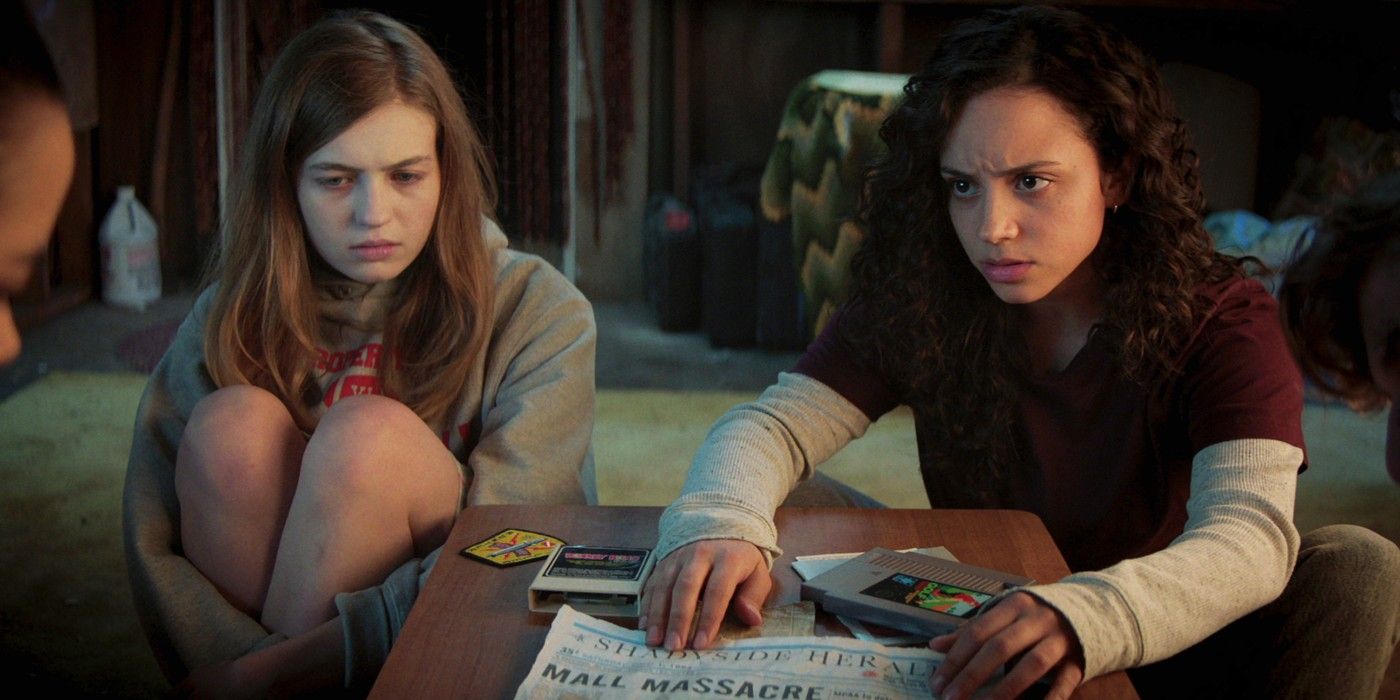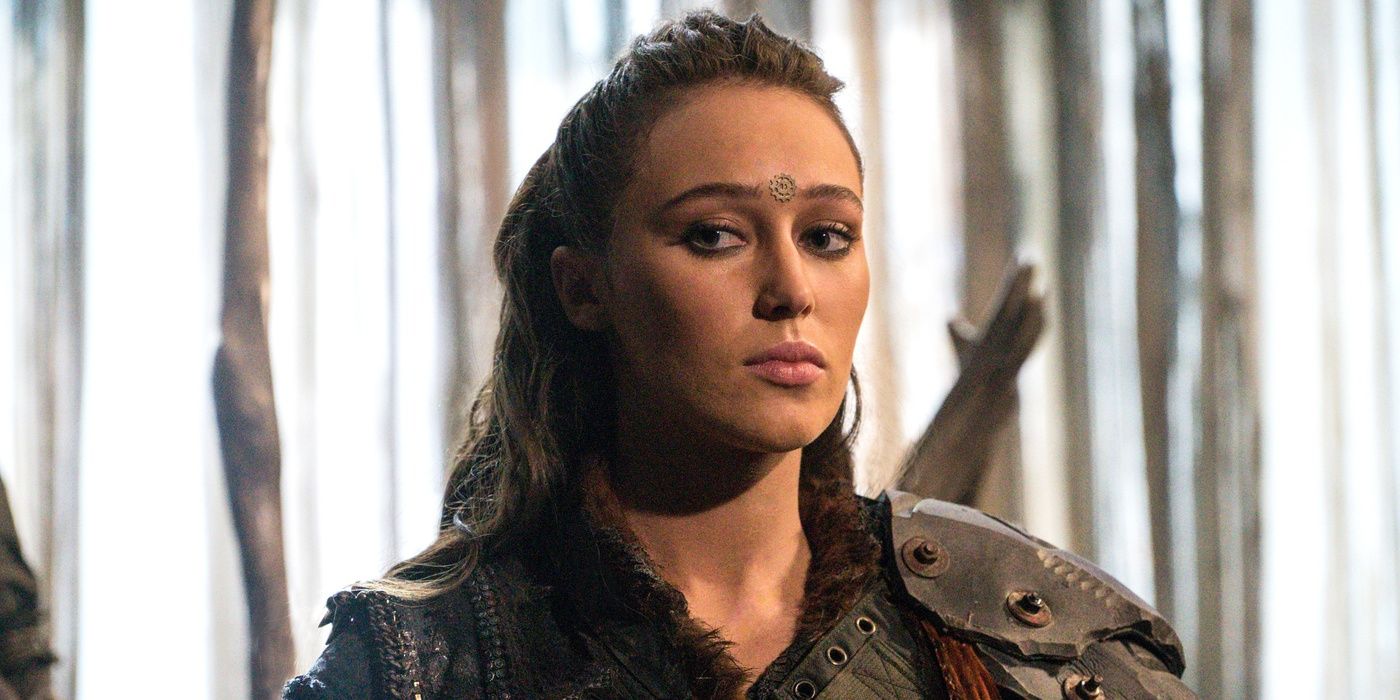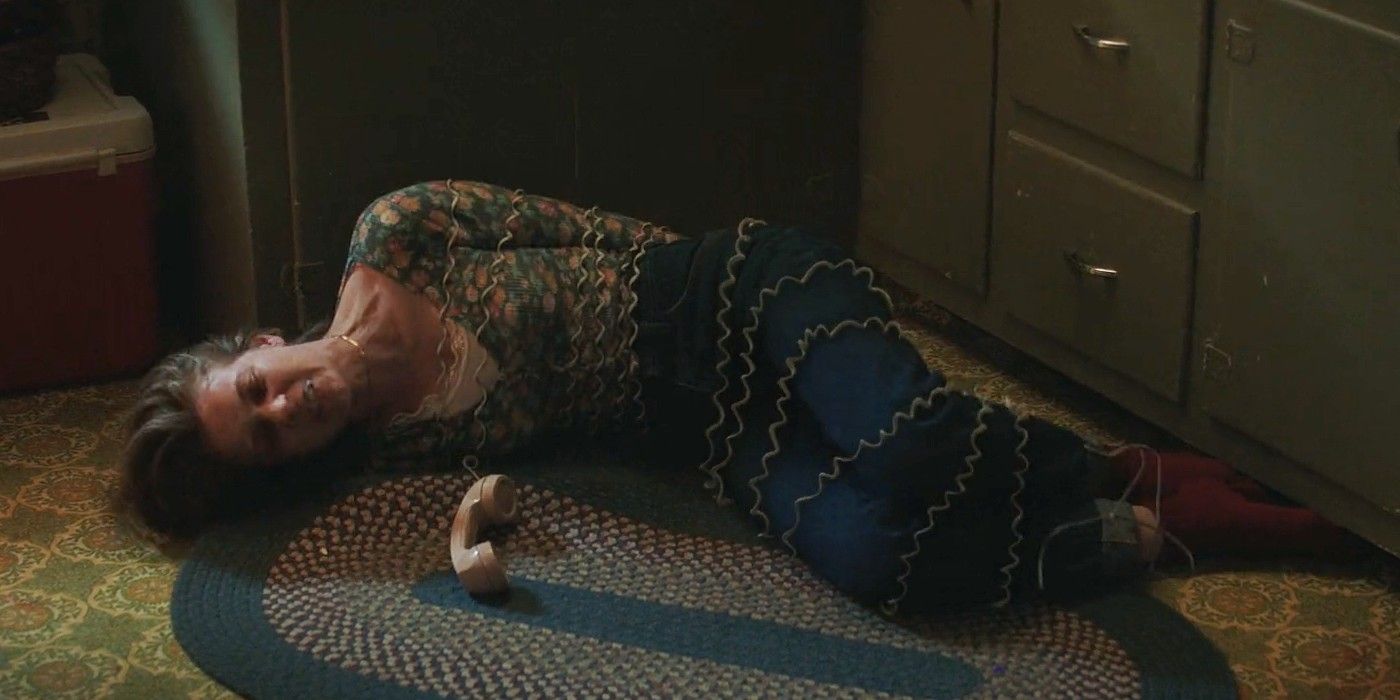WARNING: The following contains spoilers for Fear Street Part 1: 1994, available on Netflix now.
Fear Street Part 1: 1994 has a lot going for it. Not only is it kicking off a unique horror franchise, but it is also a major trilogy with a queer protagonist and relationship front and center. As a horror movie working within the slasher subgenre, 1994 was going to have plenty of death, and with that comes the question of how Fear Street handles the infamous "bury your gays" trope.
Of course in fiction death can happen to any character regardless of sexuality, and some creators are not intentionally perpetuating this trope; however, it comes down to how the filmmakers handle these deaths. Thankfully, Fear Street not only avoids this trope, but it subverts it in a way that is crucial to the overall story of 1994.
What Is the Bury Your Gays Trope?
The "bury your gays" trope is when a story kills off its LGBTQ characters because their narratives are deemed less meaningful to the overall plot than the straight characters' storylines. This trope has roots to the Hollywood Production Code, which deemed what was "acceptable" and "unacceptable" in film between the 1930s and 1950s. Back then, LGBTQ characters and issues could not be depicted in film because they were considered "perverse," and anyone doing something "immoral" must be condemned or punished in someway on screen.
While the Code eventually fell out of favor, the trend of punishing or killing LGBTQ characters continued in mainstream media, with even LGBTQ narratives often focusing on pain, tragedy or death, like with A Normal Heart, The Imitation Game and many more. While there has been improvements in representation recently, the "bury your gays" trope has still found its way into contemporary media, with 2016 having a surprising amount of queer female characters killed off on screen in a short period of time.
Death is an effective, common tool in writing, so killing off LGBTQ characters is not necessarily bad depending on how it's handled. Unfortunately, a disproportionate amount LGBTQ characters have historically been killed off on screen and denied happy endings. Thankfully, contemporary media has improved in some areas, as seen in Fear Street.
How Does Fear Street Subvert the Bury Your Gays Trope?
Off the back, the heart of 1994 is the romance between Sam and Deena. The two dated when Sam was living in Shadyside; however, after she moved, Deena ended things, but the two still have feelings for one another. As 1994 progresses, Sam, Deena and co. are pursued by the deadly slaves of Sarah Fier, a witch killed in the 1600s, and it's revealed that this will end once Sam dies.
While the plot hinges on Sam's death, this does not fall into the "bury your gays" trope because it is not saying that the queer storyline or characters are less meaningful than the other plot threads and protagonists. Instead, Fear Street is dependent on Sam and Deena's storyline, as the two come to terms with having to potentially separate permanently, and Sam's death is meaningful to everyone, so much so that the characters do everything they can to prevent it.
There is a moment where everyone, aside from Deena, decide to sacrifice Sam; however, this is when they could not figure anything else out, and as soon as they learn there may be another way, they quickly save Sam and go above and beyond to make sure she can live another day. This is where Fear Street truly turns the "bury your gays" trope on its head, as the characters realize their nightmare should end if they kill Sam and resurrect her afterward.
The entire third act is then dedicated to killing Sam with the intention of bringing her back to life, so her death is not a throw away one, let alone meaningless. It's essential to the plot of Fear Street, and in the end, she survives, defying this infamous trope in multiple ways. 1994 then takes this a step further with the twist that Sam is now Sarah's next servant.
After Sam and Deena share a peaceful moment together, Deena receives a call from the only survivor of the Nightwing Camp massacre, and she alerts her that this is far from over. A possessed Sam then stabs Deena, but she doesn't die. Deena fights not just for her life, but also for Sam's, eventually tying her up instead of killing her, as those possessed by Sarah can be resurrected from even the most brutal of deaths.
This is not a happy ending, but that's to be expected of a horror movie. Oddly enough though, this is a hopeful ending, with Deena swearing she will do anything to bring Sam back. By all means, Deena and Sam's relationship is the backbone of Fear Street, and 1994 specifically subverts the "bury your gays" trope by making this queer storyline so meaningful to the overall plot and by having its characters do everything they can to keep Sam alive.
Directed and co-written by Leigh Janiak, the Fear Street trilogy stars Sadie Sink, Kiana Madeira, Olivia Welch, Benjamin Flores Jr., Darrell Britt-Gibson, Ashley Zukerman, Fred Hechinger, Julia Rehwald, Jeremy Ford and Gillian Jacobs. Part One: 1994 is available now on Netflix, followed by Part Two: 1978 on July 9 and Part Three: 1666 on July 16.



